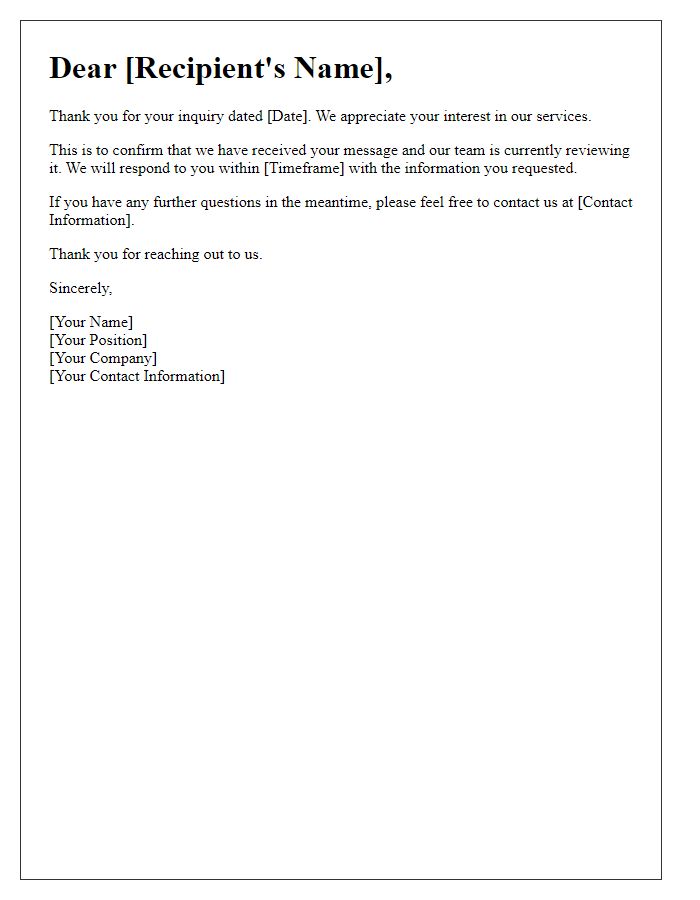Are you constantly bombarded with inquiries that leave you scrambling for an effective response? Crafting the perfect automated reply can streamline your communication and create a positive impression on your audience. In this article, we'll explore how to design a professional and engaging automated response that keeps your customers informed and satisfied. So, if you're ready to elevate your response game, read on for tips and templates that can make your life easier!

Personalization and Name Insertion
Automated response systems enhance customer interaction efficiency, offering a personalized experience through name insertion. For instance, when a user submits an inquiry via an online contact form, software can dynamically populate the message with the customer's name, creating an individualized touch. This technology often utilizes customer relationship management (CRM) databases to retrieve and integrate details, such as name and previous interactions. In industries like e-commerce, timely automated responses (usually within minutes) can significantly improve customer satisfaction, as seen in businesses using platforms like Zendesk or Salesforce. By prioritizing personalization, companies can foster stronger relationships with clients while maintaining efficiency in their communication process.
Clear Subject Line
Automated response systems efficiently manage inquiries from clients, ensuring timely communication. Subject lines like "Thank You for Your Inquiry - We Will Respond Soon" enhance clarity by indicating the email's purpose. These automated replies generally provide estimated response times ranging from 24 to 48 hours, setting realistic expectations. Including a reference number can streamline future correspondence regarding specific inquiries. Additionally, linking to a FAQ section allows clients to find immediate answers to common questions, improving overall satisfaction. Information about business hours (e.g., 9 AM to 5 PM, Monday through Friday) reinforces operational transparency and helps clients know when to anticipate further engagement.
Polite and Professional Language
Automated responses to inquiries should maintain a polite and professional tone. For instance, a typical response might include an acknowledgment of the inquiry, a confirmation that the message was received, and an estimated timeframe for when the individual can expect a follow-up. It is essential to specify the contact process, including referencing customer service staff and potential phone numbers or email addresses, enhancing trust and transparency in communication. Additionally, expressing appreciation for the individual's patience and understanding during the response period can foster a positive customer experience.
Response Time Acknowledgment
Automated response systems are crucial for efficiently managing inquiries in customer service roles. Within this framework, an acknowledgment response informs clients about current response times, typically ranging from 24 to 48 hours, depending on the inquiry's complexity. High-volume periods, such as holidays or sales events, may influence these times and prompt alerts in systems. Including the support team's contact information enhances communication transparency while setting proper expectations. Utilizing keywords such as "thank you," "inquiry received," and "response time" ensures clear, professional interaction, fostering customer trust and satisfaction.
Contact Information for Further Assistance
Automated response systems provide essential contact information for further assistance to users seeking support. These systems typically include multiple channels, such as email addresses, phone numbers, or live chat options, allowing customers to reach out effectively. For example, a dedicated support email might look like support@company.com, while a customer service hotline could offer assistance at (123) 456-7890 during business hours. Additionally, an online help center containing FAQs or troubleshooting guides can enhance user experience, guiding clients through common issues without needing direct contact. This structured approach ensures prompt resolution of inquiries, fostering customer satisfaction and loyalty.












Comments